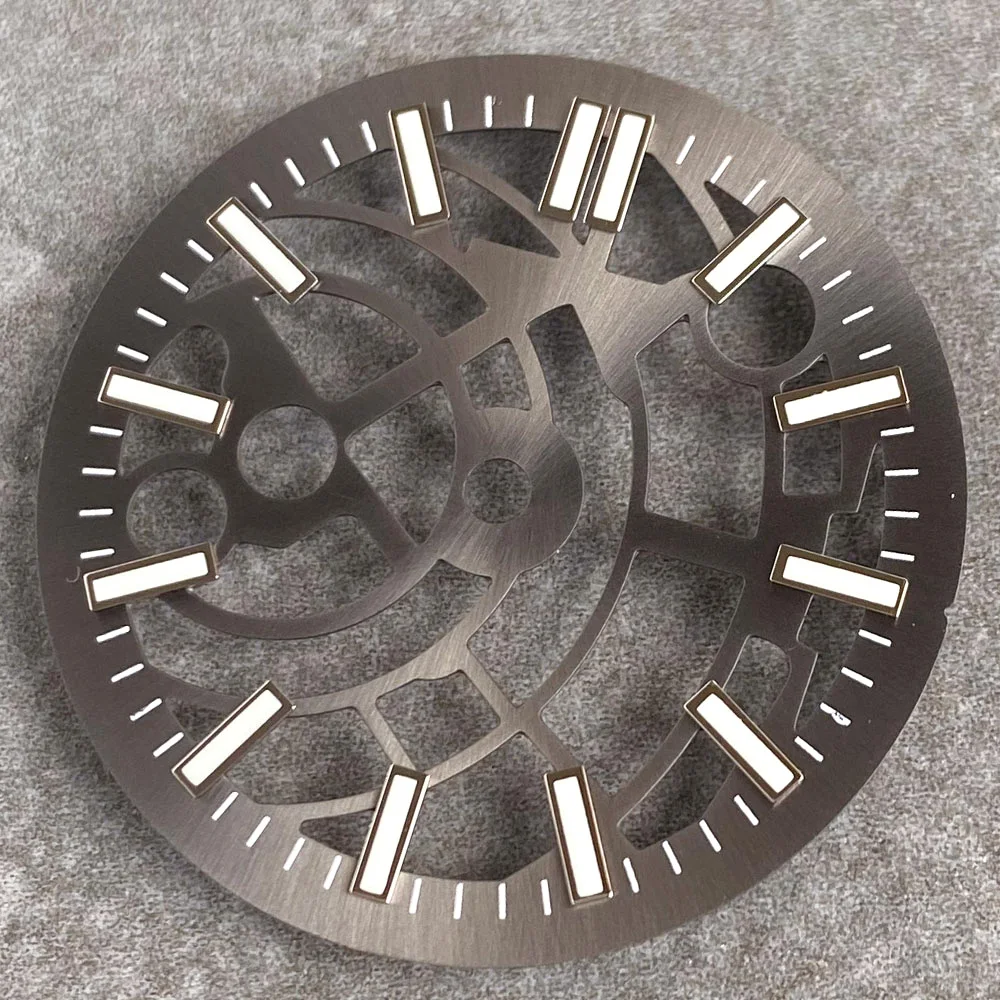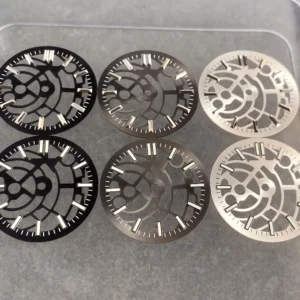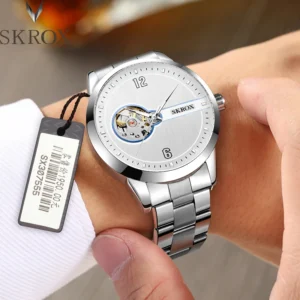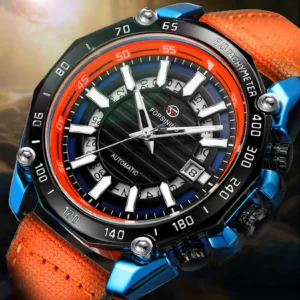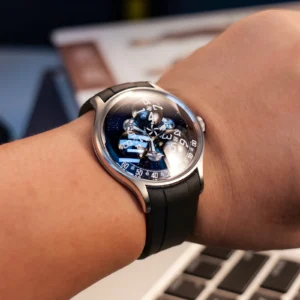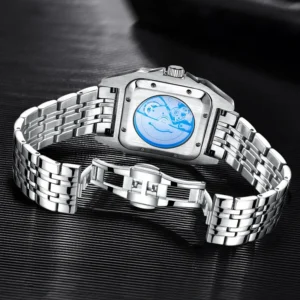Introduction: The Fascinating World of Mechanical Watch Transparency
The allure of mechanical watches has experienced a remarkable renaissance in recent years, with designs that celebrate the intricate engineering hidden beneath the dial. Among these, watches that offer glimpses into their beating mechanical hearts have captured the imagination of enthusiasts and casual wearers alike.
Movement visibility has evolved from a purely functional aspect of watchmaking to an intentional aesthetic choice that defines entire categories of timepieces. Open heart and skeleton watches represent two distinct approaches to this transparency, each with its own philosophy and visual impact.
Both styles share a fundamental appreciation for mechanical craftsmanship, yet they express this appreciation in dramatically different ways. Some prefer the subtle elegance of an open heart design, while others are drawn to the bold mechanical showcase of a skeleton watch.
This guide aims to help you understand the differences between these fascinating styles, appreciate their unique qualities, and determine which might better suit your personal taste. The historical context of mechanical watch design provides valuable perspective on how these transparent aesthetics developed within the broader watchmaking tradition.
What Defines an Open Heart Watch?
An open heart watch features a precisely cut aperture or “window” in the dial that reveals the balance wheel and escapement—the regulatory heart of the timepiece. This small opening typically showcases only a limited portion of the movement, creating a focused glimpse into the watch’s mechanical soul.
The name “open heart” derives from the visual resemblance of the balance wheel’s oscillating motion to a beating heart. This rhythmic movement, typically beating at 21,600 to 28,800 vibrations per hour, creates a hypnotic visual effect that breathes life into an otherwise static dial.
What makes an open heart design distinctive:
- Reveals only a small, strategic portion of the movement (primarily the balance wheel)
- Maintains the majority of the traditional dial structure
- Creates a subtle mechanical accent rather than a dominant feature
- Balances mechanical intrigue with overall dial legibility
- Often positioned at either 6 or 12 o’clock for symmetrical appeal
The aesthetic philosophy behind open heart designs emphasizes restraint—offering just enough mechanical intrigue to captivate the viewer while preserving the classical watch aesthetic. This approach creates an elegant compromise between traditional watch design and mechanical transparency.
The detailed mechanics of open heart displays reveal how watchmakers carefully select which components to showcase. Our collection of open heart automatic watches demonstrates the variety of ways designers integrate these mechanical windows into different dial treatments.
The Anatomy of a Skeleton Watch
A skeleton watch takes transparency to its fullest expression by removing most of the dial and cutting away non-essential material from the movement plates and bridges. The result is a comprehensive view of the watch’s mechanical architecture, where gears, springs, and levers are fully displayed in an intricate mechanical tableau.
The skeletonization process begins with a complete mechanical movement that undergoes careful removal of material while maintaining structural integrity. This delicate balance between exposure and functionality requires exceptional expertise from the watchmaker.
What defines a skeleton watch:
- Extensive removal of material from both dial and movement
- Visibility of the complete gear train, bridges, barrel, and escapement
- Minimal use of dial elements, often reduced to hour markers on the perimeter
- Complete transparency from front crystal to caseback
- Emphasis on decorative finishing of all exposed components
The philosophical approach to skeleton watches celebrates mechanical complexity in its entirety. Rather than offering a mere glimpse of the movement, it fully embraces the mechanical nature of the timepiece, transforming the functional components into aesthetic elements in their own right.
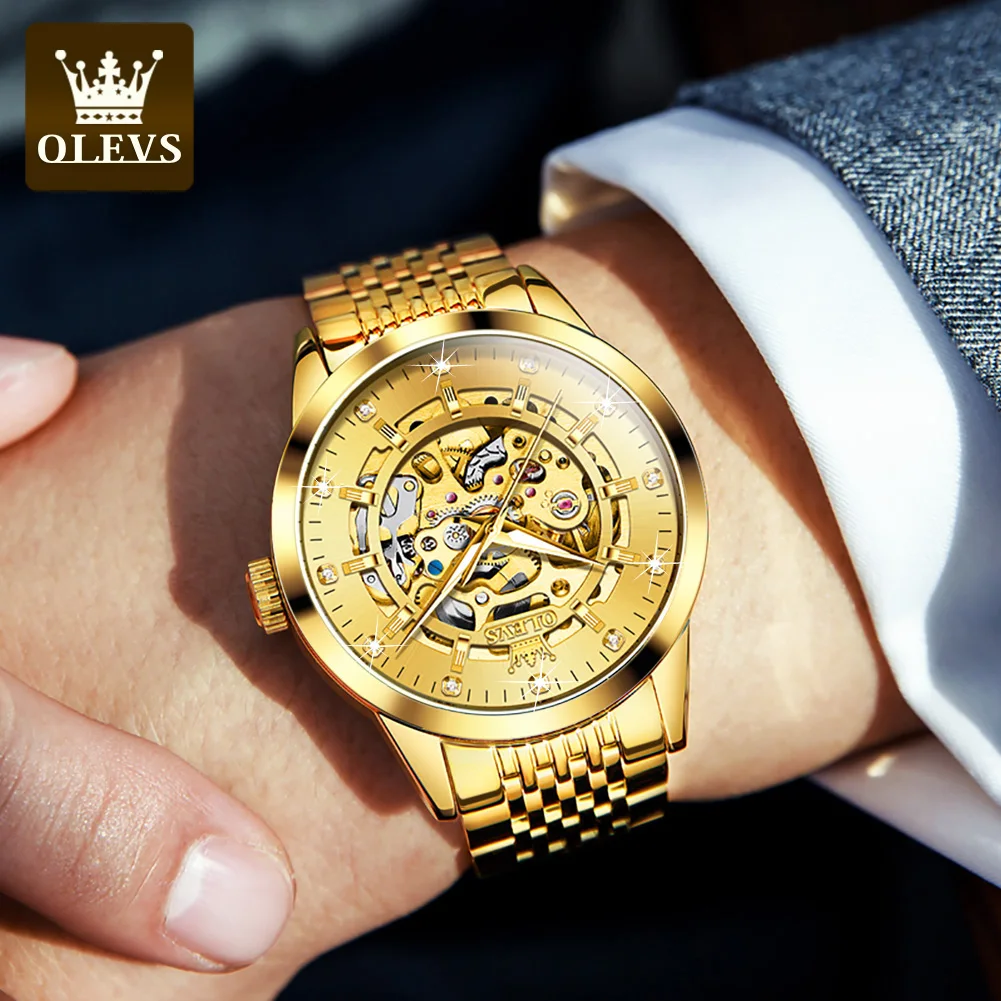
Sharp Aspect’s collection of automatic skeleton watches showcases various interpretations of this transparent design philosophy, from traditionally ornate to more contemporary minimalist approaches.
Understanding Openworked Watches: The Broader Category
“Openworked” serves as the umbrella term encompassing both open heart and skeleton watches, along with various designs that fall between these extremes. This technical term originates from the French “à jour” technique used in decorative metalworking.
While all skeleton watches are considered openworked, not all openworked watches qualify as true skeletons. Open heart designs represent the most conservative approach to openworking, featuring minimal cutaways that reveal only specific parts of the movement.
Between these two defined styles exists a spectrum of partial skeletonization. Some watches feature multiple apertures or larger windows that show more than an open heart but less than a full skeleton. Others might have partially skeletonized dials with visible bridges but maintain portions of the traditional dial.
This terminology often causes confusion in the watch community. Retailers sometimes label partial skeletonization as “skeleton watches,” while purists might insist that true skeletonization requires comprehensive removal of material from the movement itself, not merely the dial.
The captivating world of openworked designs continues to evolve as watchmakers experiment with different levels of transparency and mechanical expression, creating unique interpretations that blur the boundaries between categories.
Visual Impact: Aesthetics Comparison
The visual differences between open heart and skeleton watches create distinctly different aesthetic impressions:
| Aspect | Open Heart | Skeleton |
|---|---|---|
| Visual Dominance | Subtle accent | Bold statement |
| Dial Presence | Mostly intact | Minimal or absent |
| Mechanical Exposure | Focused on one area | Comprehensive |
| Visual Complexity | Balanced | Highly intricate |
| Color Contrast | Typically strong (dial vs. movement) | Uniform mechanical tones |
| Overall Impact | Elegant sophistication | Technical fascination |
Open heart watches maintain a more traditional watch appearance, where the mechanical element serves as an accent that complements the overall design. The contrast between the solid dial and the mechanical opening creates a deliberate point of interest without overwhelming the composition.
Skeleton watches, conversely, make the mechanical elements the central visual feature. The absence of a conventional dial shifts focus entirely to the intricate architecture of the movement, creating a more technically oriented aesthetic that celebrates mechanical complexity.
This fundamental difference extends to the overall character of the timepiece. Open heart designs often project refined elegance suitable for both casual and formal settings, while skeleton watches tend to make bolder statements that draw attention to their mechanical nature.
The visual comparison between these distinct approaches highlights how each style balances different aspects of horological tradition and innovation to achieve its unique aesthetic identity.
The Craftsmanship Behind the Transparency
The creation of both open heart and skeleton watches demands exceptional watchmaking skills, though the technical challenges differ significantly between the two styles.
For open heart watches, the craftsmanship focuses on:
* Precise cutting of the dial aperture without compromising structural integrity
* Careful finishing of components that will be visible through the opening
* Decorative treatment of the balance cock and visible bridges
* Seamless integration of the opening with the overall dial design
* Maintaining proper depth perception between dial layers
Skeleton watchmaking involves a more extensive process:
* Removing maximum material while maintaining structural strength
* Hand-beveling edges (anglage) on all visible components
* Applying decorative finishes to all exposed surfaces
* Ensuring stable functioning despite reduced structural material
* Creating an aesthetically coherent composition of mechanical elements
The finishing techniques applied to visible components represent a crucial aspect of quality in both styles. Traditional decorative methods include:
- Côtes de Genève (Geneva stripes) – parallel decorative lines
- Perlage (circular graining) – overlapping circular patterns
- Black polishing – mirror-like surface that appears black from certain angles
- Hand-beveled edges that catch the light
- Sunburst or circular brushing on wheels and plates
These finishing techniques directly impact pricing, with hand-finished components requiring many hours of skilled craftsmanship. Machine-produced watches can mimic these effects to some degree, but expert eyes can distinguish the precision and consistency of hand-finishing.
The engineering precision required for skeleton watches represents generations of accumulated watchmaking knowledge, where aesthetic considerations must be carefully balanced against mechanical requirements.
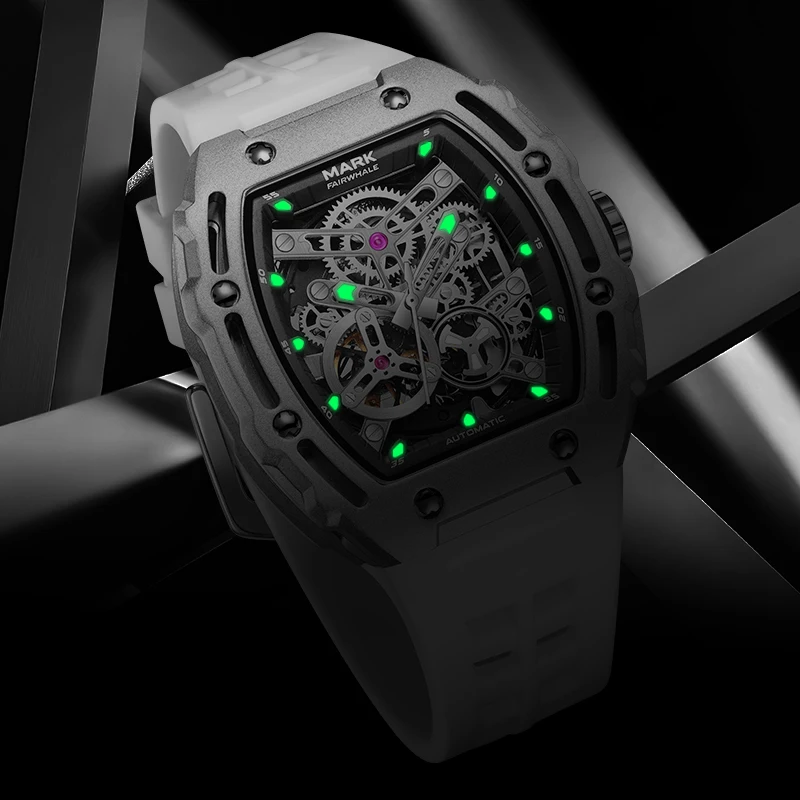
Historical Evolution of Movement Visibility
The practice of skeletonizing watches dates back to the 18th century, when master watchmakers began removing non-essential material from pocket watch movements. This technique emerged not just as an aesthetic choice but also as a demonstration of exceptional skill and a practical way to reduce weight in large pocket watches.
Early skeletonized watches required painstaking hand-filing of components, with artisans spending countless hours carefully removing material while preserving structural integrity. These timepieces were rare creations, typically commissioned by wealthy collectors who appreciated the extraordinary craftsmanship involved.
Throughout the 19th century, skeleton watches remained exclusive items produced in limited quantities by elite watchmakers. The Industrial Revolution introduced new production methods, but true skeletonization remained largely a handcrafted process.
The open heart design emerged much later as a more commercially viable alternative. By the mid-20th century, watchmakers began creating limited dial openings that revealed the balance wheel without the extensive labor of full skeletonization.
Both styles experienced a significant revival during the mechanical renaissance that followed the quartz crisis of the 1970s and 1980s. As mechanical watches transitioned from practical necessities to luxury items celebrating traditional craftsmanship, transparency became increasingly desirable as a way to showcase mechanical authenticity.
The evolution of watch technology has continuously influenced how these transparent designs are executed, with modern manufacturing capabilities enabling more precise and complex openworked creations than ever before.
Practical Considerations for Wearers
Beyond aesthetics, several practical factors distinguish the wearing experience of open heart and skeleton watches:
Readability
* Open heart watches generally maintain better time legibility due to their mostly intact dials
* Skeleton watches can challenge readability with minimal contrast between hands and background
* Some skeleton designs incorporate partially opaque elements or contrasting hands to improve legibility
Durability
* Both styles expose more of the movement to potential dust or moisture compared to solid-dial watches
* Quality models feature protective treatments and improved sealing to mitigate these risks
* Skeleton watches with more exposed components may require more frequent servicing
Maintenance
* Both styles benefit from regular professional cleaning to maintain visual appeal
* Dust particles are more visible in transparent designs than in conventional watches
* Servicing costs may be higher due to the complexity of disassembly and reassembly
Versatility
* Open heart designs tend to be more versatile across different settings and dress codes
* Skeleton watches often make stronger statements and may be perceived as more casual or avant-garde
* The level of decorative finishing affects how formal or sporty either style appears
For daily wear, open heart watches typically offer a more practical compromise between mechanical interest and functionality. Skeleton watches, while visually striking, are often chosen as statement pieces or for specific occasions rather than as everyday timepieces.
Our mechanical skeleton watches collection features designs with various practical considerations addressed through thoughtful engineering and design choices.
Automatic Skeleton Watches, Open Heart Automatic Watches
$98.36 Select options This product has multiple variants. The options may be chosen on the product pageBlack Skeleton Watches, Mechanical Skeleton Watches
Price range: $37.40 through $111.92 Select options This product has multiple variants. The options may be chosen on the product pageAutomatic Skeleton Watches, Mechanical Skeleton Watches
Price range: $166.16 through $169.76 Select options This product has multiple variants. The options may be chosen on the product pageAutomatic Skeleton Watches, Military Inspired Automatic Watches, Unique Automatic Watches
$191.88 Select options This product has multiple variants. The options may be chosen on the product pageAutomatic Skeleton Watches, Unique Automatic Watches
Price range: $1,718.05 through $1,749.20 Select options This product has multiple variants. The options may be chosen on the product pageAutomatic Skeleton Watches, Classic Automatic Dress Watches
Price range: $139.40 through $155.48 Select options This product has multiple variants. The options may be chosen on the product page
Which Style Matches Your Personality?
The choice between open heart and skeleton watches often reflects deeper aspects of personal style and how one appreciates mechanical craftsmanship.
Open heart watches typically appeal to those who:
* Prefer subtle elegance over bold statements
* Appreciate mechanical details without wanting them to dominate
* Value traditional watch aesthetics with a modern twist
* Seek versatility across different settings and occasions
* Enjoy the metaphorical “heartbeat” visible through the dial
Skeleton watches resonate with individuals who:
* Embrace bold, conversation-starting accessories
* Feel fascination for mechanical complexity and engineering
* Prefer transparency and visibility in design
* Appreciate watches primarily as mechanical art pieces
* Enjoy showcasing their interest in horological craftsmanship
Your personal connection to the mechanical elements also plays a role in this decision. Some wearers feel a stronger emotional response to the focused “beating heart” visible in an open heart watch, while others are captivated by the comprehensive mechanical panorama of a skeleton design.
Consider how each style aligns with your existing wardrobe and lifestyle. Open heart designs tend to complement both formal and casual attire, while skeleton watches often pair better with confident, individual style choices.
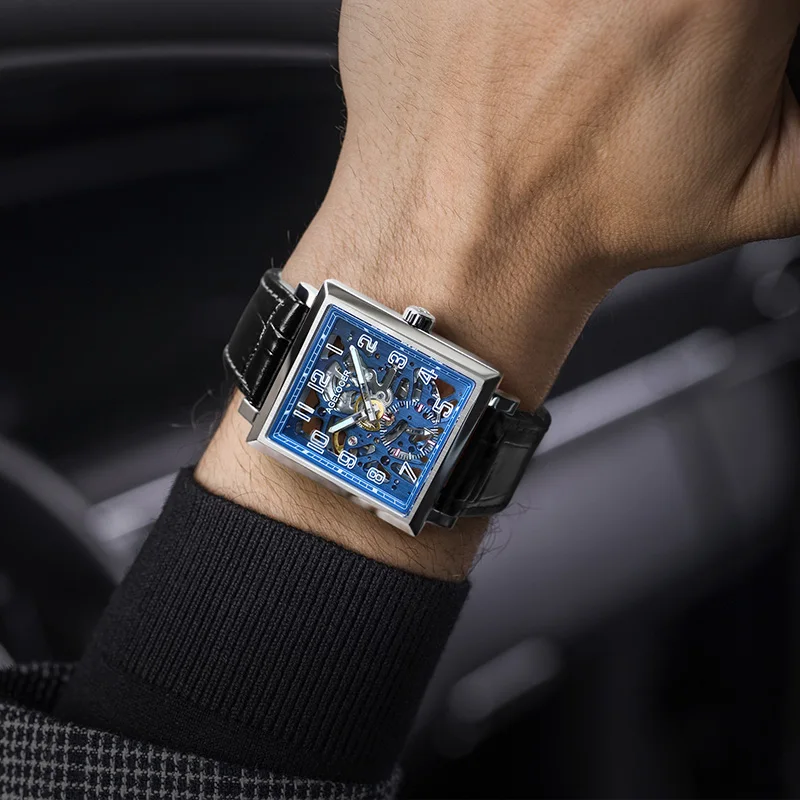
Understanding how long automatic watches last helps in appreciating that both styles represent not just fashion choices but potential long-term investments in mechanical craftsmanship.
Finding Quality in Both Designs: What to Look For
Whether you prefer open heart or skeleton designs, certain quality indicators help identify exceptional examples in either category:
Movement Quality
* Look for smooth operation of visible components
* Check for consistent finishing across all visible parts
* Research the base movement’s reputation for reliability
* Consider whether the movement is in-house or sourced
Finishing Details
* Examine edge beveling on bridges and plates (should be clean and consistent)
* Check for sharp internal corners (a sign of hand-finishing)
* Look for consistent application of decorative patterns
* Ensure polished surfaces show no machining marks
Design Coherence
* The opening or skeletonization should feel intentional, not arbitrary
* Hands and hour markers should maintain proper proportion and visibility
* Visible screws should be properly aligned and finished
* Case design should complement the level of movement decoration
Construction Quality
* Components should fit precisely with no visible gaps
* No signs of dust or debris inside the case
* Secure attachment of any remaining dial elements
* Proper alignment of hands above the movement
Price considerations vary widely, with mass-produced open heart watches starting around $200, while artisanal skeleton pieces can reach well into five or six figures. The value proposition depends largely on movement quality, finishing level, brand heritage, and materials used.
Our skeleton watches collection offers various options that demonstrate different aspects of quality craftsmanship across price points.
Is an Open Heart or Skeleton Watch Right for You?
Consider these key questions to determine which style might better suit your preferences:
Do you prefer subtlety or boldness in watch design?
If you value understatement and versatility, an open heart watch likely offers a better balance. If you appreciate bold mechanical expression, a skeleton design might be more satisfying.
How important is dial readability for your daily use?
If quickly and easily reading the time matters in your routine, open heart designs typically provide better legibility. If the aesthetic experience matters more than practical time-telling, skeleton watches offer richer visual detail.
What settings will you wear your watch in?
Open heart watches transition more seamlessly between formal and casual environments. Skeleton watches make stronger statements that may feel more appropriate in casual or creative settings.
What is your budget range?
Quality open heart watches generally start at lower price points than comparably finished skeleton watches, due to the simpler manufacturing process and reduced finishing requirements.
Do you prefer focused detail or comprehensive mechanical display?
If you appreciate the symbolic “beating heart” of the balance wheel, an open heart watch delivers this focused experience. If you’re fascinated by the complete mechanical ecosystem, a skeleton watch reveals the full mechanical story.
For those interested in darker aesthetic options, our black skeleton watches offer a contemporary take on traditional skeletonization with enhanced contrast.
Conclusion: Celebrating Mechanical Artistry Through Transparency
Both open heart and skeleton watches celebrate the beauty of mechanical watchmaking, though they do so through distinctly different approaches. Open heart designs offer a poetic glimpse of the watch’s beating heart, maintaining traditional aesthetics while providing mechanical intrigue. Skeleton watches embrace full transparency, transforming the entire movement into a visual spectacle of mechanical art.
The choice between these styles ultimately comes down to personal preference—how you connect with the timepiece and what aspects of watchmaking you most appreciate. Some find poetry in the focused oscillations visible through an open heart design, while others prefer the complete mechanical narrative told by a skeleton watch.
What unites both styles is their celebration of traditional watchmaking in an age of digital convenience. By revealing the intricate mechanics that power these timepieces, both open heart and skeleton watches invite their wearers to appreciate the remarkable human ingenuity behind mechanical timekeeping.
Whether you choose the subtle elegance of an open heart or the bold transparency of a skeleton design, you’ll carry with you a fascinating window into the mechanical artistry that has captivated watch enthusiasts for centuries.

